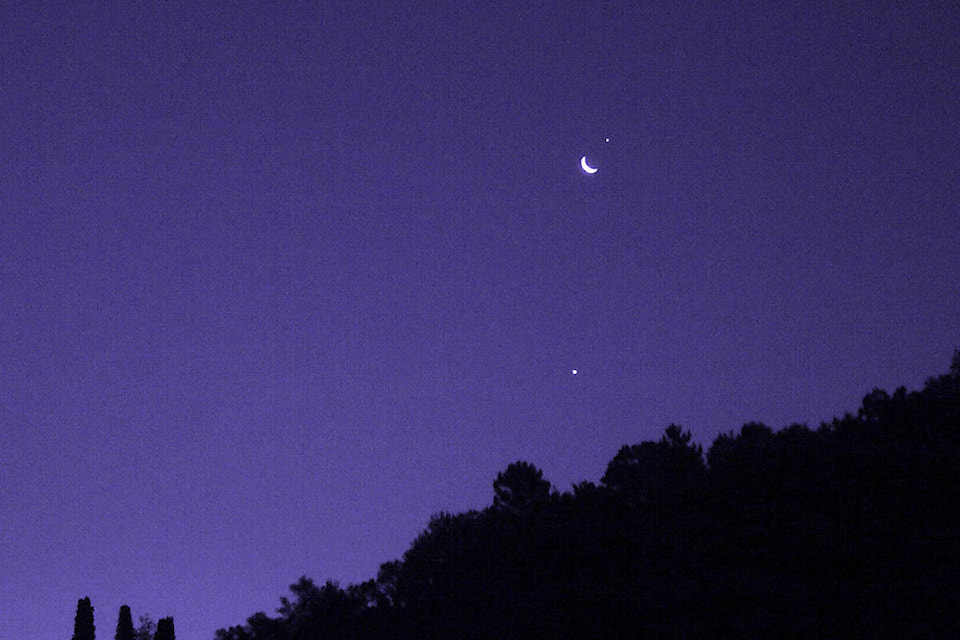The morning sky will be putting on a show worth waking up for.
On Saturday (April 30) and Sunday, Venus and Jupiter will be in conjunction – where they’ll look as if they’re nearly touching each other. The two will come within 0.2 degrees of each other, though they’re actually 690 million kilometres apart in space.
Stargazers will have to wake up around near dawn, or just before 5 a.m. on Saturday to see the planetary show. As a reward, they’ll be treated not only to the conjunction of Venus and Jupiter — Mars, and Saturn will be visible as well.
The planets are best viewed through a pair of binoculars or a telescope if you have one handy. Just make sure to be careful using them as the sun comes up to avoid any damage to your eyes.
After the big conjunction on Saturday, Venus and Jupiter will begin to separate again and stargazers can watch them slowly drift apart over the following days.
All this planetary action coincides with a new moon and a partial solar eclipse. This means that it’ll be easier to view the planets in the morning sky due to the lack of light from the moon. Unfortunately, the eclipse won’t be visible from the Northern Hemisphere. But in the Southern Hemisphere, nearly 64 per cent of the sun’s disc will be hidden behind the moon.
But don’t be too dimmed by the lack of eclipse action. On the night between May 4 and 5, the Halley’s Comet will bring the Eta Aquarids meteor shower. The best viewing will be from 3 a.m. to 5 a.m. and skywatchers will see between 10 to 30 meteors per hour at the shower’s peak. Just don’t try to catch too many winks of sleep or you may miss the speedy comets as they streak across the sky.
So, if you wake up early this week you can treat yourself to something out of this world.
READ MORE: ‘Direct hit’: Sun serves up powerful solar flare, could bring Halloween aurora
